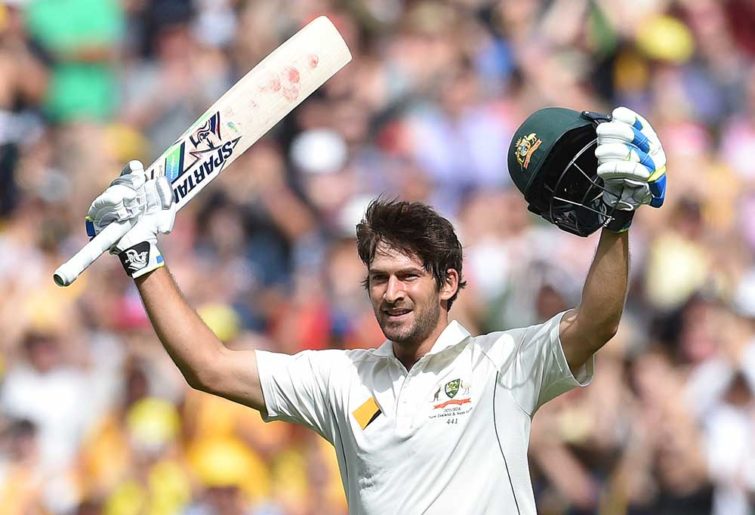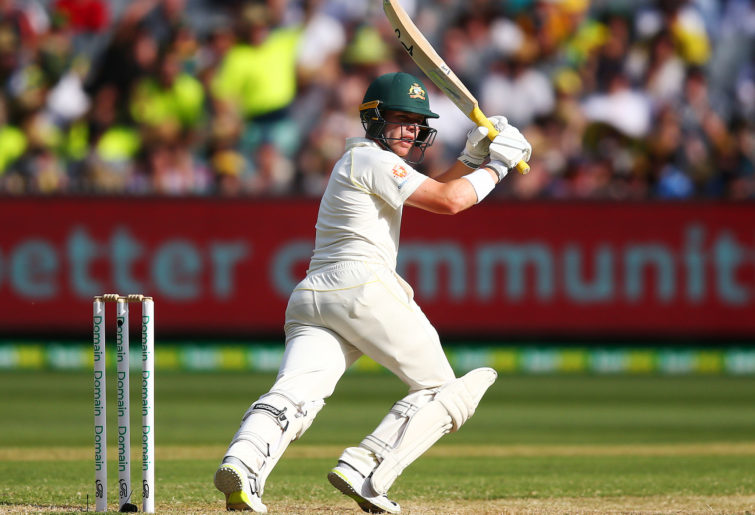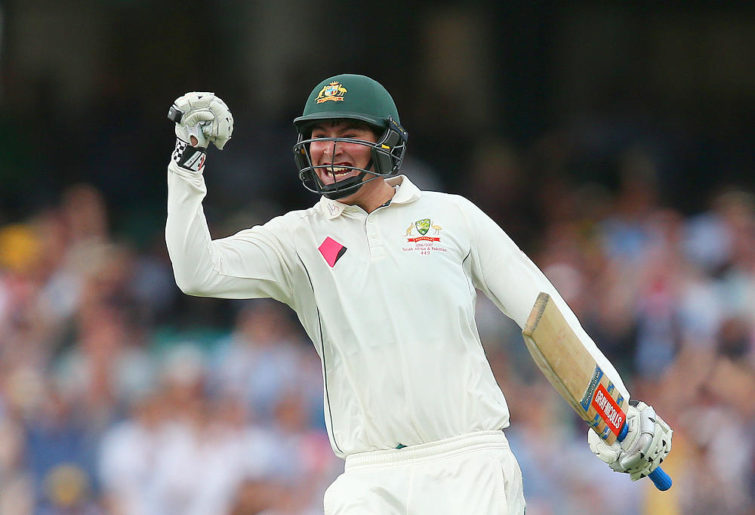There is a clear issue with the opening pair in the Australian Test cricket team.
No Australian opening partnership scored higher than 18 runs and two of the openers averaged less than ten.
Despite retaining the urn, Australia cannot leave the United Kingdom happy with the end result.
A drawn series and a lack of clarity for the future are the worthy headlines, and with a little over two months until the home Test summer begins against Pakistan, it’s time to look at some potential options for the top of the Australian order.
The lock
Usman Khawaja – 44 Tests, 2887 runs at 40.66, eight centuries, 14 half-centuries
Khawaja will be in the Australian team for the entire Test summer, that’s a certainty. His record in Australia is outstanding, averaging 52.97 from his 24 matches played on home soil. With the suspensions to key Australian personnel, it was Khawaja who kept the national team afloat.
The veteran has spent almost his entire Test career as the country’s number three batsman, but with Marnus Labuschagne now settled in the spot, Khawaja’s talents are best used at the top of the order.
It would be silly for Justin Langer to change the only two consistent constants in the batting line-up, and Khawaja has proven to be an excellent opening batsman in all forms of cricket.
It just so happens that this summer is the perfect avenue for Khawaja to establish himself at the top of the order – he averages 70.85 against Pakistan and 72.62 against New Zealand in Test cricket.
While he has only opened on seven occasions in Test cricket, averaging a skewed 96.8, his ability to adapt to any situation and sheer class means he can be a reliable source of runs while providing great support to either an aggressive opening partner, or a young talent.
The most likely
Joe Burns – 16 Tests, 1123 runs at 40.10, four centuries, four half-centuries
With all the hysteria around the Australian opening pair during the entire Ashes series, Joe Burns’ stocks rose to an all-time high.
His 180 against Sri Lanka in the last Test he played has been referenced enough times to believe Burns reaches that mark regularly, but his absence from the squad remained puzzling, regardless of that one innings.
The 30-year-old suffered from a fatigue issue, which ended his county stint after one game and that may have cost him a spot in the squad if you believe Trevor Hohns’ words.
Given the constant failures at the top of the order, it has Burns in a great position to settle into an opening position come the end of November for Australia, particularly if he gets off to a decent start in the domestic season.
Of course, the selectors will want to see something from Burns that stands out, which is why he could still be a chance to miss out on selection, but he has surely moved ahead of Marcus Harris and Cameron Bancroft, who will need to earn back the trust of selectors.
Burns has played five matches against New Zealand with an average of 55.55, including two half-centuries and two centuries.

(AAP Image/Tracey Nearmy)
David Warner – 78 Tests, 6442 runs at 46.01, 21 centuries, 30 half-centuries
Despite having an astonishing eight single figure-scores in the Ashes series and averaging 9.5 for the English Test summer, Warner will be well and truly in the mix to open the batting in the home summer.
Ricky Ponting said Warner was a lock on the weekend despite his horrendous form in the United Kingdom, and Ponting’s words generally hold some weight.
Much like the others, Warner has an impressive record against Australia’s upcoming opponents in Test cricket, and an incredible home record (averaging 59.84 in 38 Tests) lends credence to Ponting’s opinion.
We can only go on what we have seen from Warner, however, and relying on statistics from 18 months ago didn’t work during the English summer, and it won’t work in the Australian summer.
Some time off and hopefully some Sheffield Shield exposure can assist the veteran in finding form, because there’s every chance the selectors will keep the faith based on hope more than anything else.
The other options
Marcus Harris – eight Tests, 373 runs at 26.64, no centuries, two half-centuries
Harris’ struggles in England were disappointing although not completely unforeseeable.
The 27-year-old has flaws, but on the Australian domestic scene, he was able to make his strengths stand out better than any other player.
His 2018/19 Sheffield Shield season was astonishing, finishing with 1188 runs at an average of 69.88, and the selectors rewarding him with Test selection is exactly how the international cricket machine should work.
Unfortunately, despite performing better than the low bar David Warner set, it’s more likely Harris will need earn trust.
There’s a nasty tendency in Australian cricket where failure to perform inside a player’s first few Tests results in a banishing that is often hard to return form.
We can hope this is a sentiment of the past and Harris can regain some confidence when he returns to Australia, as Victoria will need him at his best.
The jury is still out on whether Harris can become a decent international cricketer, but for now, he’ll still be fresh in the minds of the selectors at the very least.

(Photo by Michael Dodge/Getty Images)
Daniel Hughes – 38 first-class matches, 2467 runs at 38.54, five centuries, 14 half-centuries
Always a tough team to break into, Hughes has now had a few seasons of consistent opportunity and output for New South Wales and has established himself into a rock-solid domestic player in Australia.
Having developed his game from relatively defensive to a good rotator of strike when struggling, Hughes’ well-rounded ability has transfered into all forms of the game, particularly impressing with the Sydney Sixers.
Over the past three seasons in the Sheffield Shield, Hughes has played 30 matches at an average of 38.92, improving each season and finishing fourth in last season’s run-scorer table.
At 30 years of age, Hughes still has plenty of time to develop his craft and break into the Test team, and consistency may well be the key ingredient to any player making the jump to international level.
The hope is that the Australian selectors will continue to reward good domestic form and not be scared off by some failures, and there aren’t too many more consistent producers than Hughes, even if he isn’t one to steal headlines.
Matt Renshaw – 11 Tests, 636 runs at 33.47, one century, three half-centuries
Since bursting onto the Test scene in 2016/17, Renshaw has barely been sighted, with almost no public visibility since he failed against South Africa in 2018.
Renshaw had an awful Sheffield Shield season last year, averaging 21, and in travelling to England to play predominately one-day cricket, Renshaw hasn’t really found himself opening the batting much.
Instead, batting at three and bowling some off-spin, Renshaw has looked to find his groove with a more attacking mindset and greater freedom to his game.
It’s easy to forget that Renshaw is just 23 years of age and is only one good domestic season away from having a long career at Test level.
He’ll be fighting for a spot in a stacked Queensland top order early in the season, but as players head away for international duty, Renshaw will get more opportunities to recapture some of that essence that make him a highly-valued commodity to invest time into.

(AAP Image/David Moir)
The bolters
Sam Whiteman – 54 first-class matches, 2765 runs at 35.44, three centuries, 18 half-centuries
Ill-timed injuries and poor form at the wrong time has perhaps cost Whiteman an international opportunity up to this point in his career.
A batsman that can float up and down the order, Whiteman is a tidy cricketer who knows how to work the ball around.
The 27-year-old played the last four matches of last season’s Sheffield Shield, finishing with 340 runs at 42.5, including three fifties.
Despite being a natural wicketkeeper, Whiteman has spent more and more time in the field, as the Scorchers and Warriors look to give other players opportunities with the gloves.
It doesn’t hurt that Justin Langer is extremely familiar with Whiteman’s work, and the exposure he has had with the Australian coach certainly adds an added layer to his potential.
Whiteman was the preferred choice for captain of the CA XI against the Indian team at the end of 2018, giving him some confidence that there is an end game to his hard work.
Max Bryant – No first-class matches
I love a Warner-style bolter, and Bryant is one of the most exciting young players in Australian cricket.
With 13 List A matches and 14 T20s next to his name, Bryant has made a name for himself as a big-hitting opening batsman, although perhaps more impressively, he hasn’t been afraid to try and build an innings.
Much the same as Renshaw, Bryant will struggle to break into a strong, international-level top order.
The 20-year-old is probably stuck to one-day and T20 cricket for now, as he builds himself up to the longer form of the game.
His 62 off 65 against a travelling Indian team for the CA XI gave fans a taste of what Bryant can do once he builds an innings, and in grade cricket, Bryant’s big scores have come at a rapid rate.
We’re probably years away from considering Bryant as an option for Test cricket, if it ever comes, but he’d certainly be a bolter that cricket fans could get behind.
An opening combination of Bryant and Khawaja would be a perfect match, hopefully we see some of it over the next year or two in any form to assist with Bryant’s development.































































































